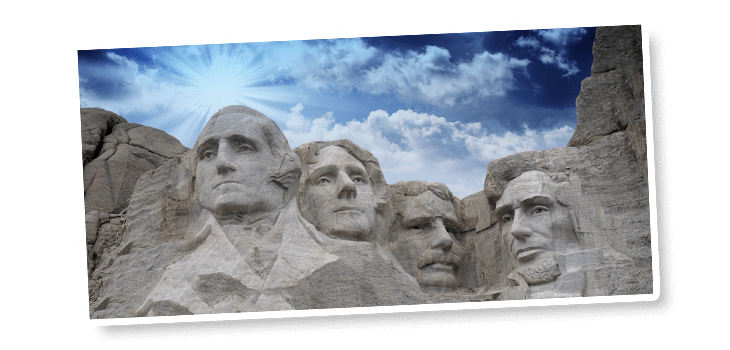The history of Presidents Day is a bit of a brain teaser. It began as a celebration of George Washington’s birthday, which is February 22, 1732, but during most of the 1800s, it was simply an unofficial observance. In the late 1870s, it became a federal holiday when Senator Stephen Wallace Dorsey of Arkansas proposed the measure. In 1879, President Rutherford B. Hayes signed Washington’s Birthday into law but it only applied to the District of Columbia. Finally, in 1885, Presidents Day was expanded to the whole country as a national holiday.
Presidents Day Fun Facts
Did you know that in 1971, the Uniform Monday Holiday Act moved Washington’s Birthday to the third Monday in February? Here’s another twist, a newspaper spoof years later declared Washington’s Birthday a day for “all presidents.” From then on, it became mostly known as Presidents Day, even though the name was never officially changed at the federal level.
Here are some other Presidents Day facts that you can share as part of your child’s learning:
- Presidents Day never falls on the actual birthday of any American president. Four chief executives, George Washington, William Henry Harrison, Abraham Lincoln, and Ronald Reagan, were born in February, but their birthdays all arrive too early or late.
- Originally, the holiday was the first to celebrate the life of an individual American, George Washington. Martin Luther King, Jr. Day, signed into law in 1983, was the second.
- Although the holiday is known as Presidents Day, each state can call it something else. For example, it’s also referred to as George Washington’s Day and Washington and Lincoln Day.
- Until the 1980s, most businesses stayed closed to observe Presidents Day. Today, many businesses are open on this holiday, and in fact, often use it as a day to highlight special promotions.
- There are many American presidents who were homeschooled including George Washington, Abraham Lincoln, John Adams, John Quincy Adams, James Garfield, Andrew Jackson, Thomas Jefferson, James Polk, Franklin Delano Roosevelt, and Theodore Roosevelt.
How to Incorporate Presidents Day into Your Homeschooling
Presidents Day presents homeschoolers with many opportunities to incorporate history, social studies, language arts, math, data collection, analytics, science, art, and more into their lessons. Here are some examples:
- Learn about Washington’s shopping habits through the National Archives. Discover the goods that he bought and peruse correspondence that our nation’s first president had with his agent and retailers he used in London.
- Research the favorite foods of your child’s favorite presidents. Have your child use specific skills such as measuring and following strict directions, as they prepare a Presidents Day feast.
- Explain how U.S. presidents are elected and the presidential election process from nominating conventions to general elections.
- Thoroughly research any president and present a paper presentation on the highlights of that president’s life and achievements.
- Encourage project-based learning with assignments such as: how real-world ad campaigns work, the value of data mining, and the basics of marketing.
- Discover the reasons why, and the science behind, George Washington’s sustainable farming activities. Present your findings through the medium of your choice.
- Attempt a presidential portrait, using paints, crayons, or even a pencil sketch.
So, as many of you enjoy a long weekend, remember to use your extra time to integrate this national holiday into your homeschooling. Not only will your child learn about U.S. presidents of today and yesteryear, but they will also learn about the real-life challenges and historical events that occurred during the presidents’ time in office.







